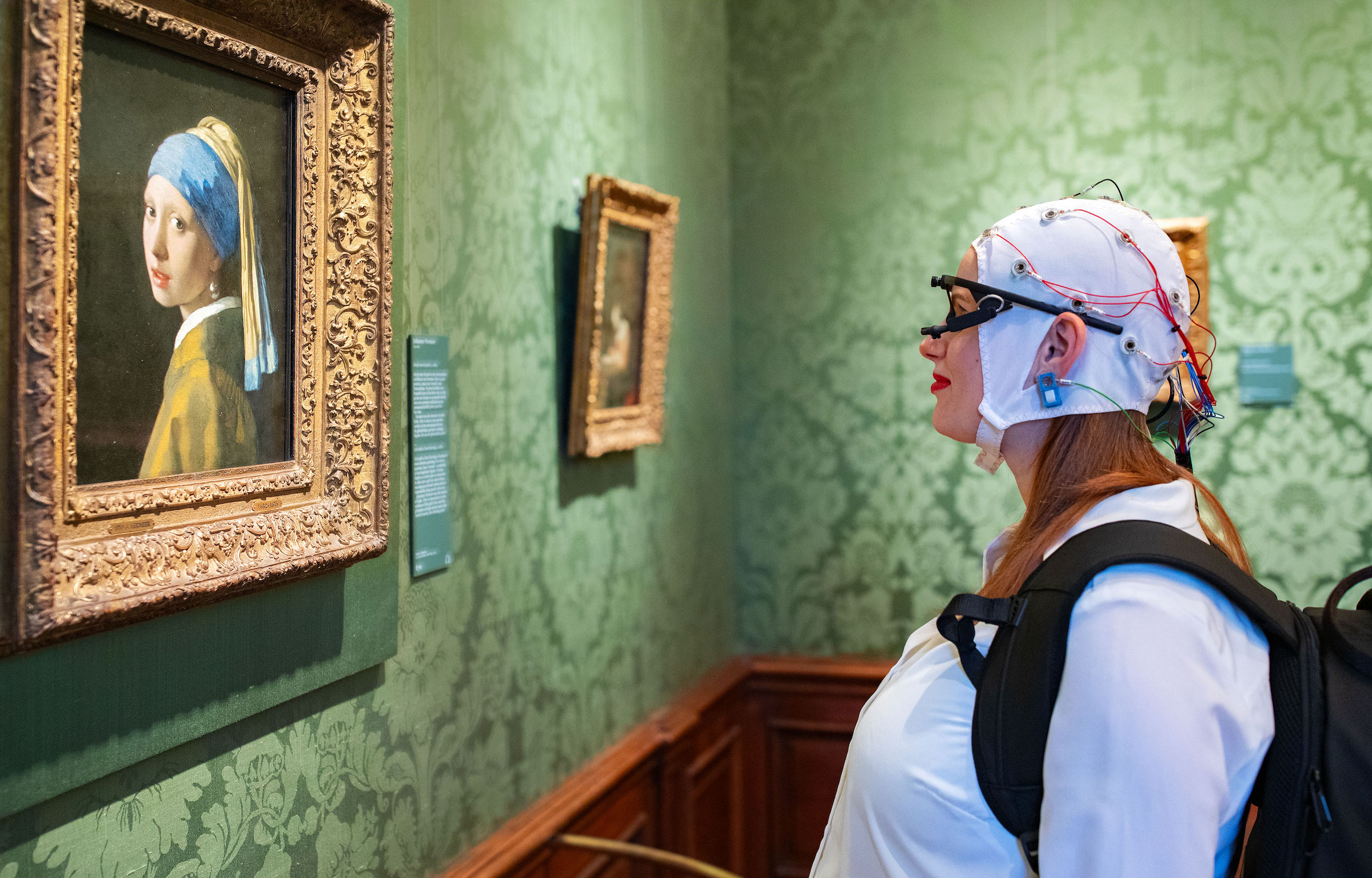
[ad_1]
A neurological study commissioned by the Mauritshuis Museum in The Hague, the Netherlands, found that viewing artworks in person elicited an emotional response 10 times stronger than viewing those same works in reproduction.
Researchers outfitted 20 subjects, ranging in age from 21 to 65, with eye-tracking equipment and an electroencephalography (EEG) brain scanner and showed them five original works in the museum and poster replicas from the museum gift shop in varying order. Magnetic Resonance Imaging (MRI) scans recorded participants’ brains to identify emotions triggered by the paintings.
Those artworks were Johannes Vermeer’s “Girl with a Pearl Earring” (c. 1665) and “View of Delft” (c. 1659–1661), Gerrit van Honthorst’s “The Violin Player” (c. 1626), and Rembrandt van Rijn’s “Self-Portrait” (1659) and “The Anatomy Lesson of Dr. Nicolaes Tulp” (1632).

The results showed that real-life artworks activated the precuneus, the part of the brain associated with self-reflection. “Girl with a Pearl Earring” elicited the strongest response, inducing “deeper personal engagement and self-reflections” than the other works tested, according to the report. The pattern of artworks inducing stronger positive responses than their reproductions held true for the other paintings in the study.
The results, released late last month, come as the Netherlands’ right-wing government plans to cut back subsidies on the culture sector, which could remove up to €350 million (~$386.22 million) a year from the arts ecosystem, possibly affecting arts spaces.
“We live in a time when we are increasingly confronted with copies and interpretations of reality,” Vera Carasso, director of the Netherlands Museum Association said in a statement. “You might think that real, genuine art or objects therefore become less important, but the opposite is true: real is becoming more important.”
[ad_2]